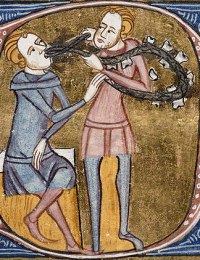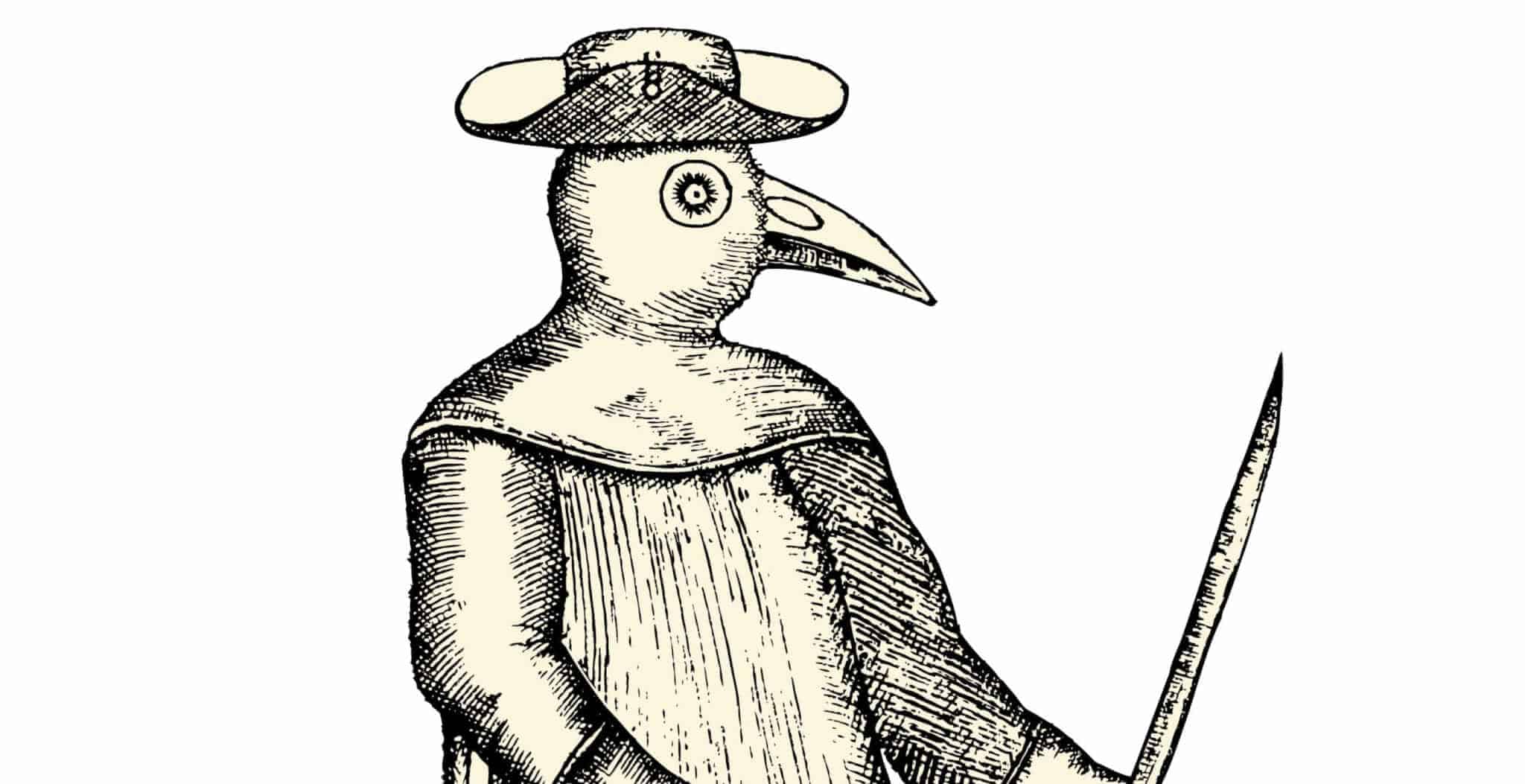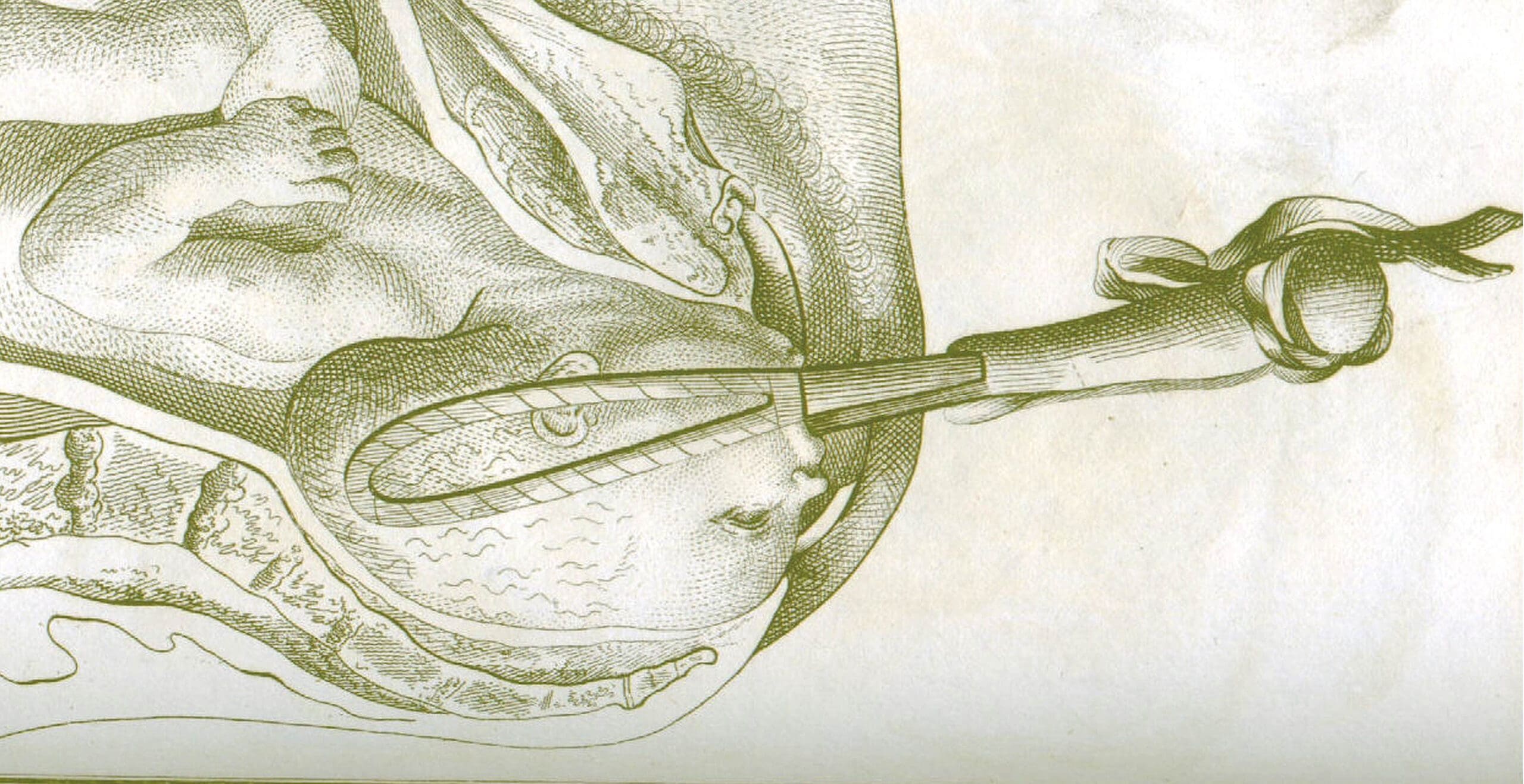There is hardly a substance known to man that has not been tried as a medicine, nor any disease for which faith-healers have failed to prescribe.
Even way back in Saxon days physicians recommended an ointment made of goat’s gall and honey for cancer, and if that failed, they suggested incinerating a dog’s skull and powdering the patient’s skin with the ashes. For the ‘half-dead disease’, a stroke, inhaling the smoke of a burning pine-tree was supposed to be very efficacious.
 In East Anglia people suffering from ague, a form of malaria characterised by fits of shivering, used to call on the ‘Quake doctors’. If the doctor couldn’t charm away the fever with a magic wand, the patient was required to wear shoes lined with tansy leaves, or take pills made of compressed spider’s webs before breakfast. A locally famous Essex ‘Quake doctor’ in the 19th century was Thomas Bedloe of Rawreth. A sign outside his cottage said, “Thomas Bedloe, hog, dog and cattle doctor. Immediate relief and perfect cure for persons in the Dropsy, also eating cancer” !
In East Anglia people suffering from ague, a form of malaria characterised by fits of shivering, used to call on the ‘Quake doctors’. If the doctor couldn’t charm away the fever with a magic wand, the patient was required to wear shoes lined with tansy leaves, or take pills made of compressed spider’s webs before breakfast. A locally famous Essex ‘Quake doctor’ in the 19th century was Thomas Bedloe of Rawreth. A sign outside his cottage said, “Thomas Bedloe, hog, dog and cattle doctor. Immediate relief and perfect cure for persons in the Dropsy, also eating cancer” !
Wart-charmers had many strange cures, some are still tried today. One that is still used used is to take a small piece of meat, rub the wart with it and then bury the meat. As the meat decays, the wart will slowly disappear. Another wart-charm:- Prick the wart with a pin, and stick the pin in an ash tree, reciting the rhyme, “Ashen tree, ashen tree, Pray buy these warts from me”. The warts will be transferred to the tree.
Orthodox practitioners would never have guessed at some of the more bizarre cures that people tried in the late 19th century. Holding the key of a church door was claimed to be a remedy against the bite of a mad dog, and the touch of a hanged man’s hand could cure goitre and tumours. In Lincoln, touching a rope that had been used for a hanging, supposedly cured fits! To cure baldness, sleep on stones, and the standard treatment for colic was to stand on your head for a quarter of an hour.
Eye diseases came in for many weird remedies. Patients with eye problems were told to bathe their eyes with rainwater that had been collected before dawn in June, and then bottled. Rubbing a stye, on the eye-lid, with a gold wedding ring would be a sure cure 50 years ago. In Penmyndd, Wales, an ointment made from the scrapings from a 14th century tomb was very popular for eye treatment, but by the 17th century the tomb had become so damaged, the practise had to stop!
For hundreds of years, the kings and queens of Britain were thought to be able to cure, by touch, the King’s Evil. This was scrofula, a painful and often fatal inflammation of the lymph glands in the neck. Charles II administered the royal touch to almost 9000 sufferers during his reign. The last monarch to touch for the King’s Evil was Queen Anne, even though her predecessor William III, had abandoned the right.
Copper bracelets and rings have a long history. More than 1500 years ago, copper rings were prescribed as a suitable treatment for colic, gallstones and bilious complaints. We still wear them today to ease rheumatism, together with nutmeg in our pocket!
Not all these folk remedies were useless; for example, the juice of willow trees was once used to treat fevers. In the form of drugs based on salicyclic acid, it is still used for the same purpose today – aspirin! Penicillin of course recalls the mould poultices that ‘white-witches’ made from bread and yeast.
Treating tooth-ache in the 19th century could be a gruesome business. Pain would be relieved, it was said, by driving a nail into the tooth until it bled, and then hammering the nail into a tree. The pain was then transferred to the tree. To prevent tooth-ache, a well tried method was to tie a dead mole around the neck!
Few people could afford a doctor, so these ludicrous treatments were all they could try, as most people lived out their lives in unrelieved poverty and misery.
Published: 24th May 2015







